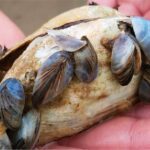Description:
Formerly known as Grass Lake, Lake Bellaire is located southwest of the town of Bellaire in Antrim County. Major inlet tributaries include the Intermediate River, which drains the upper Chain of Lakes through Bellaire, and Grass Creek, which flows into the north end of the North Arm. Water leaving Lake Bellaire flows through the Grass River into Clam Lake and eventually into Lake Michigan at the Village of Elk Rapids on East Grand Traverse Bay.
Lake Bellaire is a deep lake surrounded by extensive and ecologically important wetlands. These include conifer or mixed hardwood/conifer swamps on the north end, marshy areas west of the mouth of the Intermediate River, and marshy and swampy areas on the south end. Along with their ability to filter pollutants in the water, wetlands provide habitat to amphibians, mammals, birds, trees, flowers, and other forms of life.
There are virtually no natural rocky shorelines on Lake Bellaire, which is unusual for a lake of this size in the Elk River Watershed. This has been identified as a potential problem for successful spawning of some fish species. Most of the nearshore sediments in Lake Bellaire consist of sand or gravelly-sand. The remainder, largely in the north arm, consists of muck or marl-sand bottom.
Muskgrass (Chara spp) is a common ‘plant’ found in the nearshore areas of Lake Bellaire. Actually a multicellular branching green algae, muskgrass gets its name from its “musky” smell.
Like to fish? Because the deep water of Lake Bellaire remains cold and oxygen-rich during summer months, the lake is able to support a cold water fishery. Warm water fish inhabit shallower areas. Fish that have been found in Lake Bellaire include whitefish, perch, herring, northern pike, rock bass, smallmouth bass, largemouth bass, bluegill, lake trout, longnose gar, white sucker, brook silverside, blunt nose minnow, walleye, brook trout, black crappie, yellow perch, white sucker, brown trout, splake, pumpkinseed, brown bullhead, cisco, smelt, and rainbow trout.
Monitoring and Research:
Lake Bellaire is monitored every three years through the Watershed Council’s Comprehensive Water Quality Monitoring (CWQM) Program for dissolved oxygen, specific conductivity, pH, nitrate-nitrogen, total nitrogen, total phosphorus, and chloride levels.
This lake is monitored through the State’s Cooperative Lakes Monitoring Program (CLMP).
The Elk River Chain of Lakes Watershed Plan Implementation Team meets regularly and is working to protect the lakes in the Chain.
Additional Resources:
View an interactive map of Lake Bellaire, including public access sites, on Michigan Fishweb. Please note this link will take you away from the Tip of the Mitt Watershed Council site.
Title Link Comprehensive Water Quality Monitoring (CWQM) 2022 Elk River Chain of Lakes Watershed Management Plan 2017 Lake Bellaire Shoreline Survey 2014-2015 Elk River Invasive Species Monitoring Project Report 2013 Lake Bellaire and Clam Lake Aquatic Plant Survey 2010 Lake Bellaire, Clam Lake, Torch Lake Shoreline Algal Survey
Shoreline Survey:
Elk River Chain of Lakes Shoreline Survey
Project Summary During the summers of 2016 and 2017, the Tip of the Mitt Watershed Council led a coordinated effort to conduct a shoreline survey for 15 Lakes in the Elk River Chain of Lakes Watershed. The surveys were meant to document conditions that could impact water quality, including the


